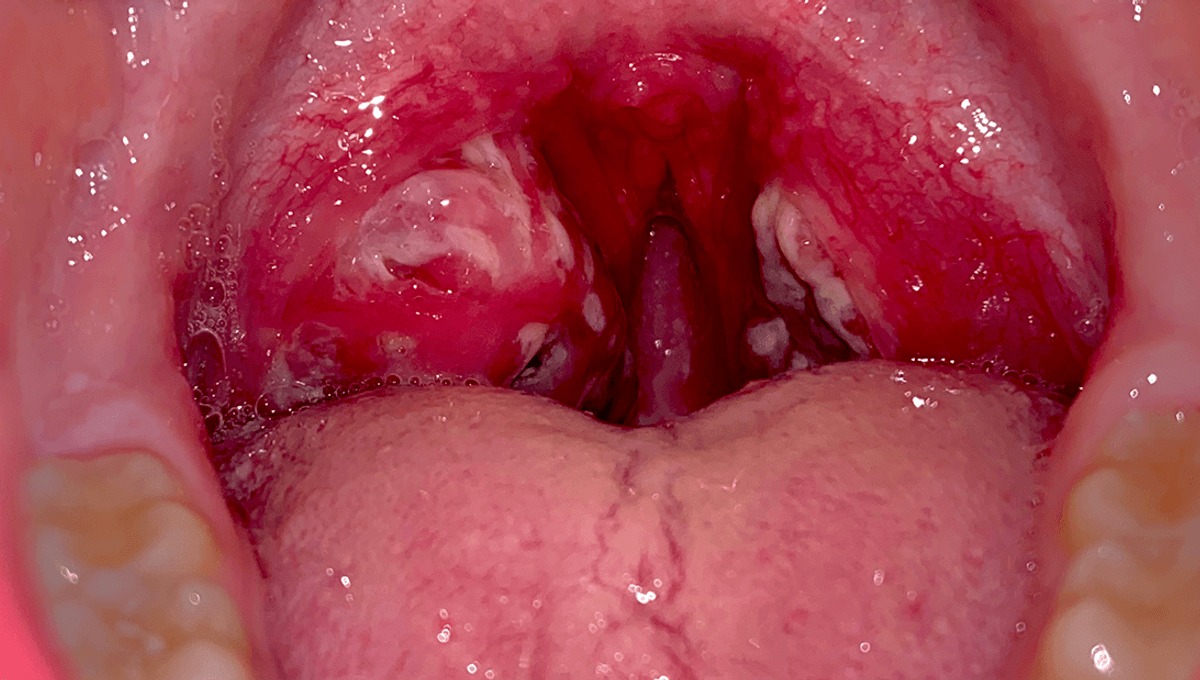
Recently, a 45-year-old woman was surprised to find out she had tonsilitis and needed to have her tonsils removed. While this is a normal procedure, what was so surprising was that she had already had her tonsils removed 40 years ago, aged 5.
“I knew that there was some sort of little flap or something that’s been there for years, but I didn’t realize what it was. I just thought, ‘I’m not a doctor myself. I don’t know much about mouth structure. That’s just how it is,’” Katy Golden, from Detroit, Michigan, USA, told CNN. “But if I would get sick and have a sore throat or something, then of course the back of my mouth would be super inflamed, and it was hard to swallow. And I thought, ‘Well, obviously it’s not my tonsils. I have those out. I’ve just got a sore throat.’”
After several of these incidents, the doctor informed her on one visit that her tonsils were inflamed, she had tonsilitis.
So, what’s going on?
Tonsils, while some evidence shows they may be useful in later life, are sometimes removed or partially removed by medical professionals if (for example) the patient has chronic tonsilitis, or difficulty breathing during sleep. While this may sound like a drastic step, like the appendix, it is part of the body you can get along without.
“In early life, the lymph glands are not completely developed, and our bodies rely on our tonsils to trap bugs and foreign material that we either breathe in or swallow. By trapping these particles, the body begins to recognise them as potentially dangerous things and produces things called antibodies to kill them so they can’t harm us. Tonsil tissue is particularly good at trapping these particles as it has valleys and holes (called crypts) which increase its surface area,” Simon Carney, Professor of Otolaryngology – Head & Neck Surgery at Flinders University, explained in a piece for The Conversation.
“Tonsil tissue is particularly important in the first six months of life. After this, our lymph glands take over most of the work and the tonsils are essentially out of a job.”
Though most or sometimes all patients in studies report an improvement in breathing following the removal of tonsils, for some, it is not the end of the story. Studies following up on patients have found that the organ can regenerate in a small number of patients. Though the studies are fairly small, one study of 82 patients found that 6.1 percent (five children in total) experienced regrowth of their tonsils from tissue left behind.
“The tonsillar tissue remaining after partial tonsillectomy in children has a remarkable tendency to grow back, related to a diet abundant in sugar and numerous upper respiratory tract infections,” another study, which looked at diet as well as immune function, explains. “Tonsillar regrowth was age related and occurred most frequently in individuals older than 7 years.”
Though that study found that tonsil growth occurred more in people older than seven, another found that it was more common in patients under 5, possibly a problem with working with small numbers of patients and other factors involved in the studies. Tonsil regrowth has been found by other studies to occur in total tonsillectomy, sometimes being linked to recurrent fevers and infections.
“At the time of the study visit, the palatine tonsil regrowth was seen more often in patients with recurrent fevers than in asymptomatic patients,” one study explains, “yet, several asymptomatic patients had regrowth as well, even though all patients had undergone total [tonsillectomy].”
Though certainly irritating, should your tonsils prove troublesome again, it is possible for patients to have their tonsils removed a second time in order to relieve their symptoms, as Golden discovered.
Source Link: People Are Just Now Learning Your Tonsils Can Grow Back